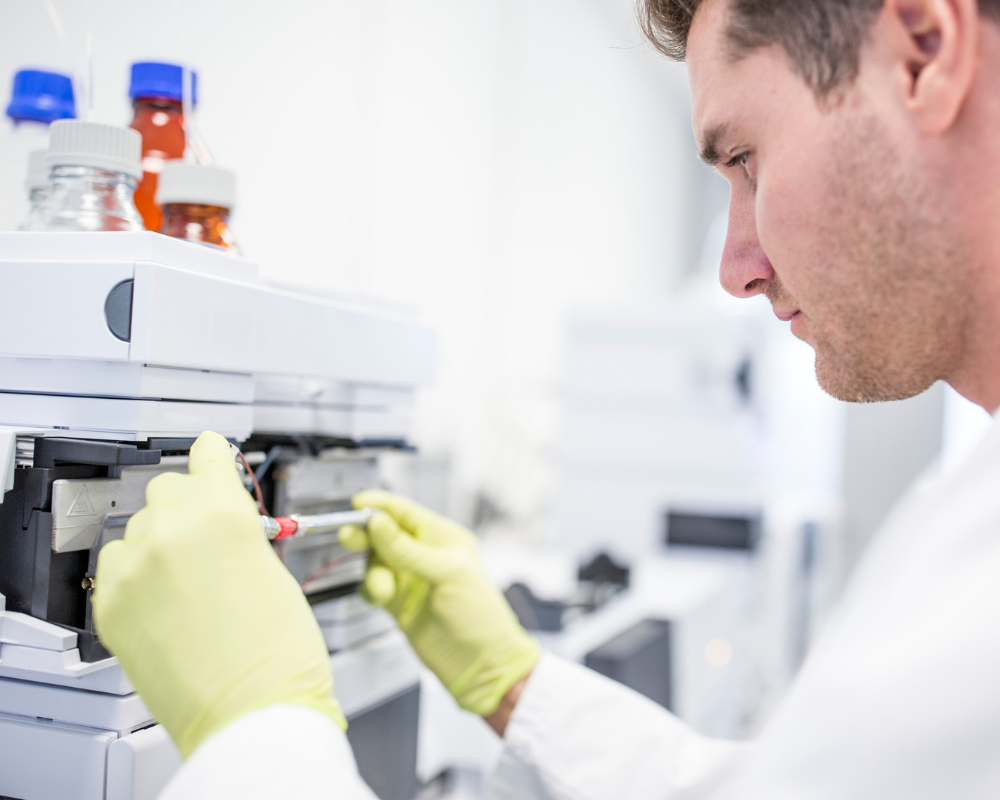
Chromatography and spectrometry are often used together because they provide complementary capabilities that enhance the analysis of complex mixtures. To delve into how each contributes to the powerful duo, let’s first quickly define them:
Chromatography: This technique is primarily used for separating the components of a mixture. There are various forms of chromatography (like gas chromatography, liquid chromatography, etc.), but they all function on the principle of separating substances based on their differential interactions with a stationary phase and a mobile phase. The result is that individual components elute (come out of the chromatographic system) at different times, known as retention times, which can be used to help identify them.
Spectrometry: Once the components are separated by chromatography, spectrometry is used for identification and quantification. Spectrometry analyzes the molecular or atomic composition of a substance by observing the interaction between matter and electromagnetic radiation. Common methods include mass spectrometry (MS), which provides molecular weight information, and UV-visible spectrometry, which gives information about the electronic structure of molecules.
Chromatography and Mass Spec work together to define and quantify the composition of the sample. The benefits include:
Enhanced Identification: Using chromatography alone might help in separating the components, but it doesn't always provide enough information to identify them accurately. Spectrometry can confirm the identity of each component by providing molecular or structural information.
Quantification: Spectrometry can accurately quantify the amounts of each component present in a sample after they have been separated by chromatography.
Increased Sensitivity and Specificity: The combination allows for the detection of very low concentrations of substances and can distinguish between compounds that are similar but not identical.
This integrated approach is extremely useful in fields like pharmaceuticals, where it’s important to identify and quantify all ingredients in a drug; environmental science, for detecting pollutants at low concentrations; and in forensic science, for analyzing substances found at crime scenes. Each technique enhances the other, resulting in a powerful analytical tool that can provide detailed insights into the composition of complex mixtures.
The most popular configurations of tandem chromatography - mass spectrometry are:
1. Liquid Chromatography-Tandem Mass Spectrometry (LC-MS/MS):
a. Triple Quadrupole Mass Spectrometer: This is the most common type of tandem mass spectrometer used in LC-MS/MS. It's especially renowned for its quantification capabilities, allowing for highly sensitive and specific detection of compounds. It uses two mass-filtering quadrupoles with a collision cell in between for fragmentation of the analyte ions.
b. Quadrupole Time-of-Flight (Q-TOF): Combines a quadrupole mass filter with a time-of-flight mass analyzer. This setup provides both high accuracy mass measurements and the capability for complex mixture analysis and structural identification of unknown compounds.
2. Gas Chromatography-Tandem Mass Spectrometry (GC-MS/MS):
a. Triple Quadrupole-Tandem Mass Spectrometer: Similar to LC-MS/MS, a triple quadrupole used in GC-MS/MS offers excellent quantification and confirmation via selected reaction monitoring (SRM), making it ideal for trace analysis in complex samples such as environmental or forensic samples.
a. Ion Trap Mass Spectrometer: Although less common than triple quadrupoles, ion traps in GC-MS/MS can perform multiple rounds of mass spectrometry on each ion (MS^n), which is useful for detailed structural elucidation.
3. Ion Mobility Spectrometry-Mass Spectrometry (IMS-MS): While not a chromatographic technique in the traditional sense, ion mobility spectrometry can separate ions based on their shape and charge before mass analysis. When coupled with LC-MS, it provides an additional dimension of separation, enhancing the resolution of complex samples.
Each of these configurations has specific advantages that make them suitable for different applications. For example, triple quadrupoles are preferred for quantitative analysis due to their excellent sensitivity and specificity, while Q-TOF and ion traps are favored for their superior mass accuracy and resolution, useful in identifying unknown compounds and complex mixture analysis.
How you prepare your samples prior to chromatography or mass spectrometry is equally as important as the analysis itself. Poor sample preparation can lead to contaminants which could ultimately yield false-positive results. Laboratories all over the world trust Organomation's nitrogen dryers to prepare samples for analysis, including Waters and Agilent - two of the most reputable mass spectrometer manufacturers. Contact us today to discuss your sample preparation needs and revolutionize your workflow.
